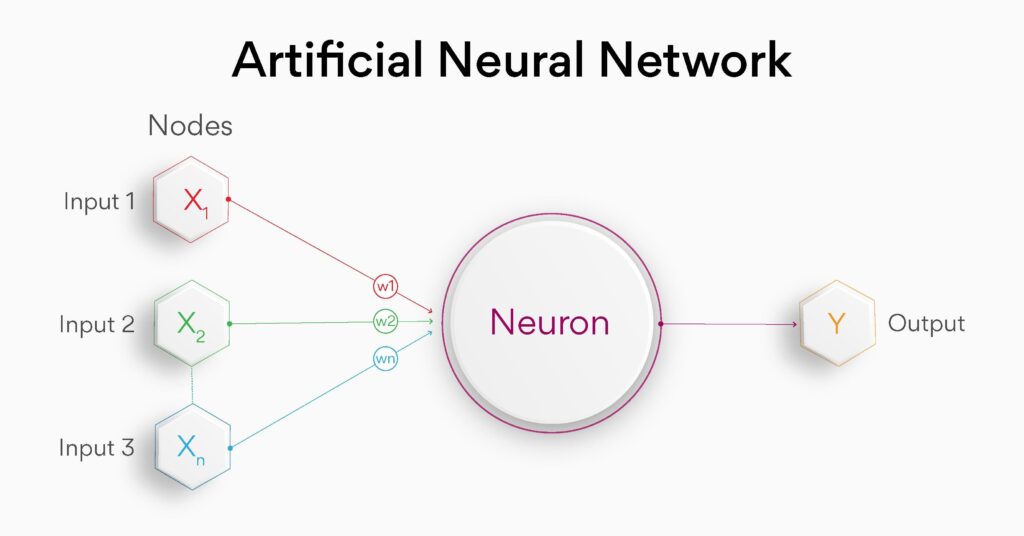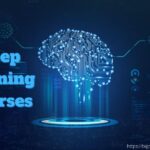You know that feeling when you look at something incredibly complex, something that seems like pure magic, and you just have to understand how it works? That’s exactly how I felt about Artificial Intelligence, particularly those incredible feats of image recognition, language translation, and even creative generation. It all pointed back to one core concept: Neural Networks. For a long time, the idea of them felt like peering into the Matrix – fascinating, but utterly impenetrable. Until I finally took the plunge and enrolled in an Artificial Neural Network Course. And let me tell you, it changed everything.
From Confusion to Curiosity: My First Steps Towards an ANN Course
Before I started, my understanding of AI was mostly from sci-fi movies and news headlines. I knew it was powerful, I knew it was changing the world, but the "how" was a giant, intimidating question mark. Terms like "deep learning," "backpropagation," and "convolutional layers" floated around, sounding like secret incantations. I’d even dabbled a bit with basic programming, but the jump to AI seemed like a chasm.
That’s when I decided enough was enough. I wasn’t going to just watch from the sidelines. I started searching for something that would break down these complex ideas into digestible pieces. What I needed wasn’t just a textbook; I needed a guide, a storyteller, someone who could walk me through the labyrinth. That’s how I stumbled upon what would become my gateway: a dedicated Artificial Neural Network Course.
Unpacking the Digital Neuron: My Initial "Aha!" Moments
The first few modules of the ANN Course were like learning the alphabet of a new language. We started with the very basics: what is a neuron in this digital world? Our instructor, who had a knack for making complicated things sound like common sense, explained it beautifully.
Imagine a single digital neuron as a tiny decision-maker. It receives several pieces of information (inputs), each with a certain importance (weight). It adds them all up, and if the total reaches a certain threshold, it "fires" or sends out a signal. It’s like a simple light switch, but with a bit more math involved. This simple analogy, repeated and built upon, suddenly made the abstract concrete.
I remember the thrill of writing my very first line of code that simulated a single neuron. It was just a few lines, taking numbers, multiplying them by other numbers, and checking if they passed a limit. But seeing it work, seeing that tiny digital brain make a decision, felt like a small miracle. This wasn’t magic anymore; it was logic, built step by step.
Building Blocks and Hidden Layers: The Architecture Unveiled
As the Artificial Neural Network Course progressed, we moved from single neurons to networks of them. This is where the real power begins. Imagine connecting dozens, hundreds, or even thousands of these tiny decision-makers together. Some neurons talk to others, forming layers. There are input layers (where your initial data goes), output layers (where your network gives its answer), and crucially, hidden layers in between.
These hidden layers are where the real "thinking" happens. They extract patterns, identify features, and make sense of the incoming information in ways that are hard for a human to explicitly program. Our instructor often used the analogy of a team of specialized workers. Each worker (neuron) does a small, specific task, but together, they can solve incredibly complex problems.
Learning about different network architectures – how these layers are arranged and connected – was fascinating. It wasn’t just about throwing neurons together; there were thoughtful designs for different tasks. This section of the ANN Course really highlighted the creativity involved in building these systems.
The Art of Learning: How Networks Get Smarter
Perhaps the most mind-bending part of the Artificial Neural Network Course was understanding how these networks learn. It’s not like we explicitly tell them, "This is a cat," or "This is a dog." Instead, we show them thousands of examples, and they figure it out themselves.
The core idea is called "backpropagation," and while the math behind it can get intense, our course broke it down into an intuitive process. Imagine your network makes a guess, and it’s wrong. The course taught me how the error is calculated and then sent backward through the network. Each connection (weight) is slightly adjusted to make the next guess a little bit better. It’s like a child learning to draw: they try, they see their mistake, and they adjust their hand for the next stroke.
This iterative process, happening thousands or millions of times, is what allows a network to "learn." Seeing this process unfold in our coding exercises, watching the "accuracy" improve with each training step, was incredibly rewarding. It wasn’t just theory; it was tangible progress right before my eyes. This particular aspect of the ANN Course truly demystified the learning process of AI.
Getting Hands-On: Python, TensorFlow, and Keras
Theory is one thing, but actually building something is another. A huge strength of my Artificial Neural Network Course was its practical focus. We spent a lot of time coding. We used Python, a language known for its readability, and powerful libraries like TensorFlow and Keras.
Keras, in particular, felt like a superhero tool. It allowed us to build complex networks with just a few lines of code. Our instructor encouraged us to experiment, to break things, and then to fix them. I remember the frustration of debugging my first network when it wouldn’t learn, only to feel a surge of triumph when I finally found the tiny typo that was holding everything back.
This hands-on experience, guided by the ANN Course, was invaluable. It transformed abstract concepts into functional programs. I wasn’t just understanding neural networks; I was building them, training them, and watching them perform tasks.
Beyond the Basics: What an ANN Course Unlocks
While my Artificial Neural Network Course primarily focused on foundational concepts, it also opened my eyes to the vast landscape of neural networks. We touched upon Convolutional Neural Networks (CNNs) for image processing, Recurrent Neural Networks (RNNs) for handling sequences like text or speech, and generative networks that can create new content.
It felt like I had been given a map to an entire new continent. Suddenly, the news articles about AI advancements made so much more sense. I could understand the underlying mechanics, the possibilities, and even the limitations. The course didn’t just teach me about neural networks; it taught me a new way to think about problem-solving and pattern recognition.
Who Should Consider an Artificial Neural Network Course?
If any of my journey resonates with you, if you’re curious about the inner workings of AI, or if you’re looking to enhance your skill set, I wholeheartedly recommend finding a good Artificial Neural Network Course.
- For the Curious Beginner: If you’re like me, starting with a basic understanding of programming but intimidated by AI, a well-structured course can be your perfect entry point.
- For Data Scientists & Analysts: Adding ANN skills to your repertoire will significantly boost your ability to tackle complex, non-linear data problems.
- For Developers: Understanding neural networks allows you to integrate powerful AI capabilities into your applications.
- For Career Changers: The demand for AI-literate individuals is soaring. An ANN Course can be a solid foundation for a new career path in machine learning or data science.
My Final Thoughts: More Than Just Code
Taking an Artificial Neural Network Course wasn’t just about learning algorithms or writing code. It was about demystifying a field that once felt out of reach. It was about gaining a new perspective on how intelligence, even artificial intelligence, can be built from simple components.
I’m not going to lie; there were moments of frustration, moments where a concept just wouldn’t click. But the patient guidance, the practical exercises, and the supportive learning environment of the course helped me push through. And every time a concept did click, every time my code successfully trained a network to perform a task, it was incredibly exhilarating.
If you’ve ever looked at AI with a mix of awe and bewilderment, and wondered if you could ever truly understand it, take heart. You can. Find an Artificial Neural Network Course that speaks to you, dive in, and prepare to embark on an incredible journey into the digital brain. It’s a challenging, rewarding, and truly eye-opening experience that I wouldn’t trade for anything.
.png?1678746405)


